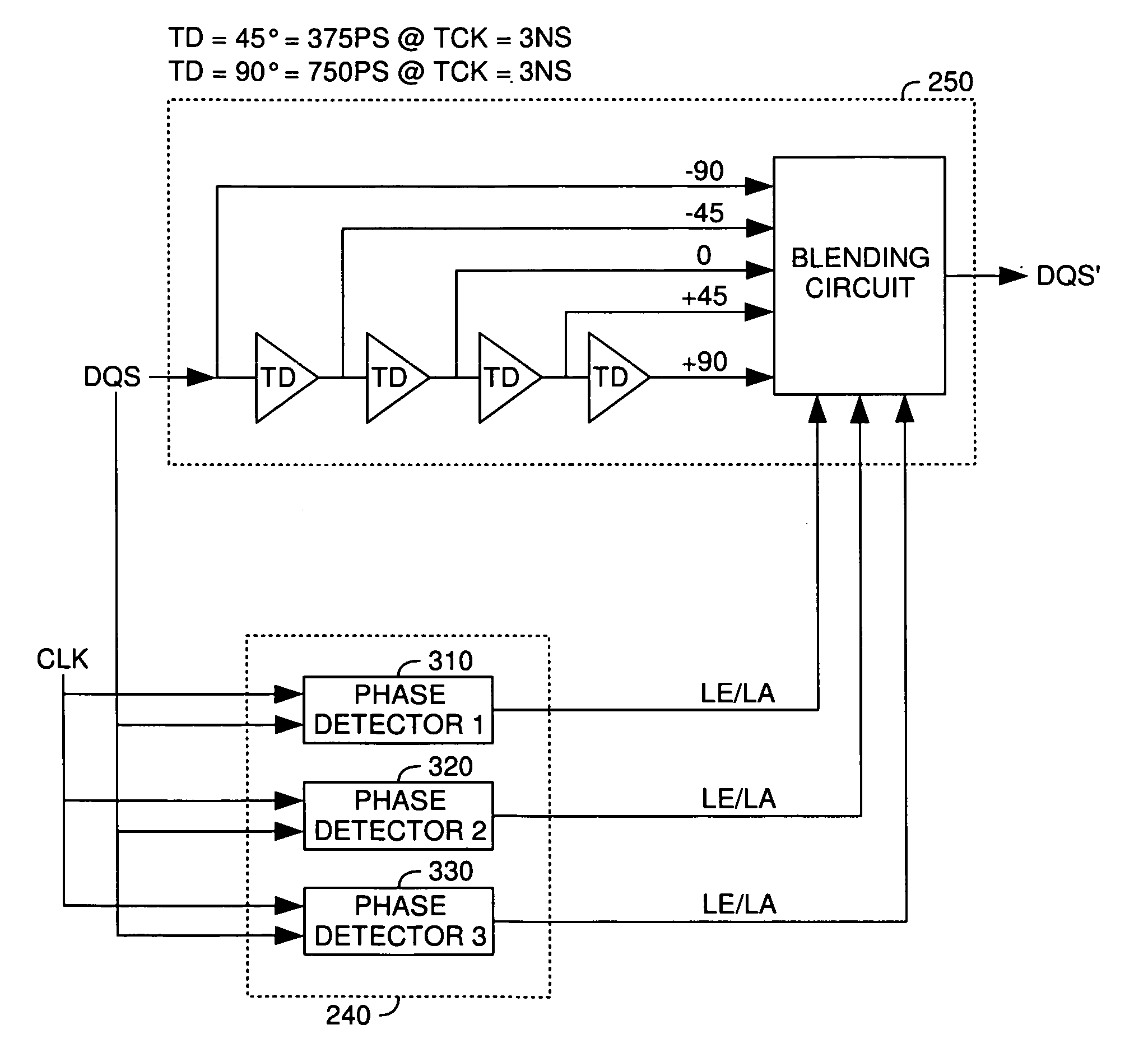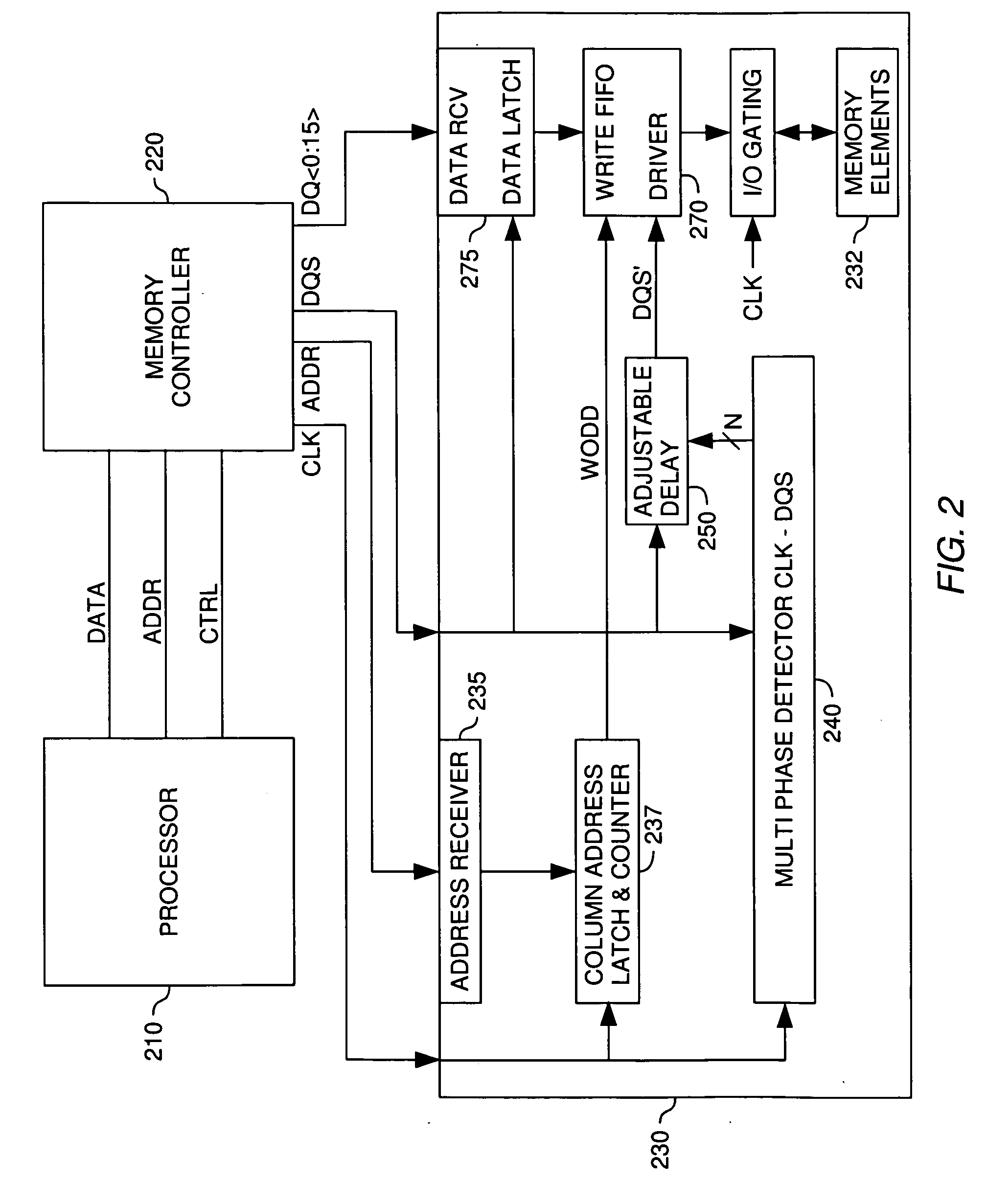Data strobe synchronization for DRAM devices
- Summary
- Abstract
- Description
- Claims
- Application Information
AI Technical Summary
Benefits of technology
Problems solved by technology
Method used
Image
Examples
Embodiment Construction
[0020] Embodiments of the present invention generally determine, at a device (e.g., a DRAM device), a phase difference between two signals such as a clock signal (CLK) and a data strobe signal (DQS), and adjusts some parameters of timing based on the measured difference. In some embodiments, the adjustment is made to the data strobe signal itself (DQS). In other embodiments, the adjustment is made to other internal memory signals that are, perhaps, utilized in circuits controlled by the DQS signal (e.g., these signals are within the DQS domain).
[0021] To facilitate understanding, embodiments of the present invention will be described with reference to memory devices, specifically DRAM devices, as specific, but not limiting application examples. However, those skilled in the art will recognize that the same principles described herein may be applied to adjust the timing of various control signals in various other types of integrated circuits, based on a detected phase difference bet...
PUM
 Login to View More
Login to View More Abstract
Description
Claims
Application Information
 Login to View More
Login to View More - R&D
- Intellectual Property
- Life Sciences
- Materials
- Tech Scout
- Unparalleled Data Quality
- Higher Quality Content
- 60% Fewer Hallucinations
Browse by: Latest US Patents, China's latest patents, Technical Efficacy Thesaurus, Application Domain, Technology Topic, Popular Technical Reports.
© 2025 PatSnap. All rights reserved.Legal|Privacy policy|Modern Slavery Act Transparency Statement|Sitemap|About US| Contact US: help@patsnap.com



